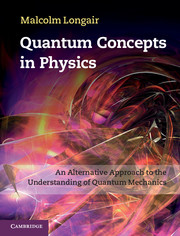Book contents
- Frontmatter
- Contents
- Preface
- Acknowledgements
- Part I The Discovery of Quanta
- Part II The Old Quantum Theory
- Part III The Discovery of Quantum Mechanics
- 10 The collapse of the old quantum theory and the seeds of its regeneration
- 11 The Heisenberg breakthrough
- 12 Matrix mechanics
- 13 Dirac's quantum mechanics
- 14 Schrödinger and wave mechanics
- 15 Reconcilingmatrix and wave mechanics
- 16 Spin and quantum statistics
- 17 The interpretation of quantum mechanics
- 18 The aftermath
- Epilogue
- Notes
- References
- Name index
- Subject index
10 - The collapse of the old quantum theory and the seeds of its regeneration
from Part III - The Discovery of Quantum Mechanics
Published online by Cambridge University Press: 05 February 2013
- Frontmatter
- Contents
- Preface
- Acknowledgements
- Part I The Discovery of Quanta
- Part II The Old Quantum Theory
- Part III The Discovery of Quantum Mechanics
- 10 The collapse of the old quantum theory and the seeds of its regeneration
- 11 The Heisenberg breakthrough
- 12 Matrix mechanics
- 13 Dirac's quantum mechanics
- 14 Schrödinger and wave mechanics
- 15 Reconcilingmatrix and wave mechanics
- 16 Spin and quantum statistics
- 17 The interpretation of quantum mechanics
- 18 The aftermath
- Epilogue
- Notes
- References
- Name index
- Subject index
Summary
‘In spite of its high-sounding name and its successful solutions of numerous problems in atomic physics, quantum theory, and especially the quantum theory of polyelectron systems, prior to 1925, was, from the methodological point of view, a lamentable hodgepodge of hypotheses, principles, theorems and computational recipes rather than a logical consistent theory. Every single quantum-theoretic problem had to be solved first in terms of classical physics; its classical solution had then to pass through the mysterious sieve of the quantum conditions or, as it happened in the majority of cases, the classical solution had to be translated into the language of quanta in conformance with the correspondence principle. Usually, the process of finding the ‘correct solution’ was a matter of skillful guessing and intuition, rather than of deductive or systematic reasoning.’
(Jammer, 1989)Although written with the benefit of hindsight, there is no doubt that, by the end of 1924, there was a major crisis in the attempts to create a system of ‘quantum mechanics’ which could encompass all the features of atoms and their spectra. At the heart of the problem was the wave–particle duality first enunciated by Einstein in 1905 and reinforced by de Broglie's remarkable association of ‘matter-waves’ with electrons in 1924. As recorded by Jammer (1989),
‘This state of affairs was well characterised by Sir William Bragg when he said that physicists are using on Mondays, Wednesdays, and Fridays the classical theory and on Tuesdays, Thursdays and Saturdays the quantum theory of radiation.’
- Type
- Chapter
- Information
- Quantum Concepts in PhysicsAn Alternative Approach to the Understanding of Quantum Mechanics, pp. 189 - 202Publisher: Cambridge University PressPrint publication year: 2013



